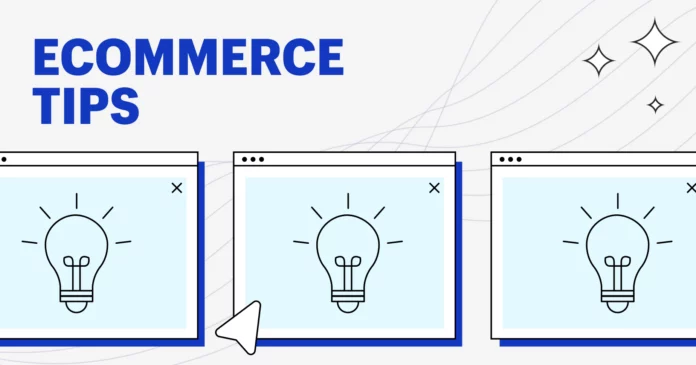In recent years, the rise of e-commerce has transformed the way businesses operate. With the convenience of online shopping and the increasing demand for digital services, starting and running an online business has become an attractive option for entrepreneurs. If you’re considering venturing into the world of e-commerce, this article provides valuable tips to help you get started and succeed in the online marketplace.
Introduction
The e-commerce industry has experienced exponential growth, driven by changing consumer behaviors and technological advancements. To succeed in this competitive landscape, entrepreneurs need to understand the unique aspects of running an online business and implement effective strategies to stand out among the competition.
Choosing the Right E-commerce Model
Before diving into the e-commerce world, it’s important to choose the right business model that aligns with your goals and resources. Common e-commerce models include:
- Retail E-commerce: Selling products directly to consumers through an online store.
- Dropshipping: Partnering with suppliers who handle inventory and shipping on your behalf.
- Subscription-based: Offering recurring products or services on a subscription basis.
- Digital Products: Selling digital goods such as e-books, software, or online courses.
Consider the pros and cons of each model and choose the one that suits your products or services, target audience, and business goals.

Conducting Market Research
Thorough market research is essential to understand your target audience, identify market opportunities, and assess the competitive landscape. Consider the following steps:
3.1 Identifying a Niche
Narrow down your target market by identifying a specific niche that is not saturated. Focusing on a niche allows you to cater to a specific audience and differentiate yourself from broader competitors.
3.2 Assessing Market Demand
Evaluate the demand for your products or services in the market. Use tools like keyword research and trend analysis to understand search volumes and customer interests. This data will help you validate your business idea and make informed decisions.
3.3 Analyzing Competitors
Study your competitors to identify their strengths, weaknesses, pricing strategies, and unique selling propositions (USPs). This analysis will help you position your business effectively and develop strategies to stand out in the market.
Building a Professional Website
Your website is the face of your online business and plays a crucial role in attracting and retaining customers. Consider the following factors when building your website:
4.1 Selecting an E-commerce Platform
Choose a reliable e-commerce platform that suits your needs. Popular options include Shopify, WooCommerce, and Magento. Consider factors like ease of use, customization options, scalability, and integration with other tools.
4.2 Designing User-Friendly Navigation
Ensure your website has intuitive navigation that allows visitors to find products or information easily. Organize categories, use clear labels, and include search functionality to enhance the user experience.
4.3 Optimizing for Mobile Devices
With the increasing use of smartphones, it’s essential to optimize your website for mobile devices. Ensure your website is mobile-responsive, loads quickly, and provides a seamless experience across different screen sizes.
4.4 Implementing Secure Payment Systems
Security is crucial in e-commerce. Implement secure payment gateways that protect customer information. Display trust badges and SSL certificates to build trust with your customers.
Developing a Strong Online Brand
Building a strong online brand is essential for standing out in the e-commerce marketplace. Focus on the following aspects:
5.1 Defining Your Brand Identity
Define your brand’s mission, values, and unique selling proposition. Clearly communicate your brand’s personality and what sets you apart from competitors. This will resonate with your target audience and attract loyal customers.
5.2 Creating Compelling Visuals and Content
Invest in high-quality visuals and engaging content that aligns with your brand. Use professional product images, compelling descriptions, and videos to showcase your products or services effectively.
5.3 Building an Engaged Online Community
Leverage social media platforms and other online channels to build an engaged community around your brand. Interact with your audience, respond to their inquiries, and encourage user-generated content to foster brand loyalty and advocacy.
Effective Digital Marketing Strategies
To drive traffic and generate sales, implement effective digital marketing strategies tailored to your target audience:
6.1 Search Engine Optimization (SEO)
Optimize your website for search engines to improve organic visibility. Conduct keyword research, optimize product descriptions and meta tags, and create valuable content that targets relevant keywords.
6.2 Social Media Marketing
Leverage social media platforms to reach and engage with your target audience. Identify the platforms where your audience spends time, create a content strategy, and engage with your followers through regular posts, stories, and interactions.
6.3 Pay-Per-Click (PPC) Advertising
Consider using PPC advertising platforms like Google Ads and social media ads to drive targeted traffic to your website. Set a budget, define your target audience, create compelling ad copies, and monitor the performance to optimize your campaigns.
6.4 Influencer Marketing
Collaborate with relevant influencers who have a strong following in your niche. Partnering with influencers can help increase brand awareness, reach new audiences, and build credibility.
Providing Exceptional Customer Service
Delivering exceptional customer service is crucial for customer satisfaction and retention. Consider the following factors:
7.1 Prompt and Clear Communication
Respond to customer inquiries promptly and provide clear and helpful information. Use chatbots or live chat features to offer real-time support and enhance the customer experience.
7.2 Fast and Reliable Shipping
Partner with reliable shipping providers to ensure fast and reliable delivery of products. Provide tracking information to customers and keep them informed throughout the shipping process.
7.3 Hassle-Free Returns and Exchanges
Make the returns and exchange process as seamless as possible for customers. Clearly communicate your return policy, provide prepaid shipping labels if possible, and promptly process returns or exchanges to maintain customer satisfaction.
7.4 Personalized Customer Support
Offer personalized customer support to address specific inquiries or concerns. Use customer relationship management (CRM) tools to keep track of customer interactions and provide a personalized experience.
Monitoring Analytics and Making Data-Driven Decisions
Utilize analytics tools like Google Analytics to track key metrics and gain insights into customer behavior, website performance, and marketing campaigns. Use this data to make informed decisions, optimize your strategies, and improve your online business.
Staying Agile and Adapting to Changes
The e-commerce landscape is constantly evolving, so it’s essential to stay agile and adapt to changes. Keep an eye on industry trends, customer preferences, and emerging technologies. Be open to experimenting with new strategies and continuously improving your online business.
Conclusion
Starting and running an online business requires careful planning, market research, and effective implementation of digital marketing strategies. By choosing the right e-commerce model, building a professional website, developing a strong brand, implementing effective marketing strategies, providing exceptional customer service, and staying adaptable, you can set yourself up for success in the rapidly growing world of e-commerce.
FAQs (Frequently Asked Questions)
Q1: How much does it cost to start an online business?
A1: The cost of starting an online business can vary depending on factors such as the e-commerce model, website development, marketing strategies, and inventory. It is important to create a budget and consider expenses such as domain registration, website hosting, platform fees, product sourcing, marketing campaigns, and ongoing operational costs.
Q2: How long does it take to see results in an online business?
A2: The time to see results in an online business can vary depending on various factors such as the market, competition, marketing strategies, and customer response. It’s important to set realistic expectations and understand that building a successful online business takes time and consistent effort.
Q3: How can I differentiate my online business from competitors?
A3: To differentiate your online business, focus on providing a unique value proposition, exceptional customer service, high-quality products or services, a user-friendly website, and a strong brand identity. Understanding your target audience and catering to their specific needs can also help you stand out from the competition.
Q4: How important is social media marketing for an online business?
A4: Social media marketing is crucial for an online business as it provides opportunities to reach and engage with your target audience. It allows you to build brand awareness, drive website traffic, interact with customers, and promote your products or services. Social media platforms offer a cost-effective way to establish an online presence and connect with potential customers.
Q5: What are some emerging trends in e-commerce?
A5: Some emerging trends in e-commerce include mobile commerce (m-commerce), voice commerce, artificial intelligence (AI) for personalized shopping experiences, augmented reality (AR) and virtual reality (VR) for enhanced product visualization, and sustainability-focused e-commerce practices. Keeping up with these trends can help you stay innovative and meet evolving customer expectations.


